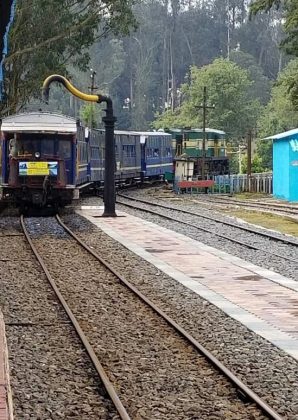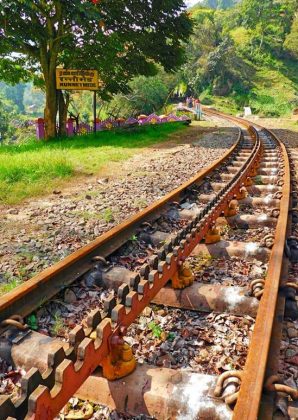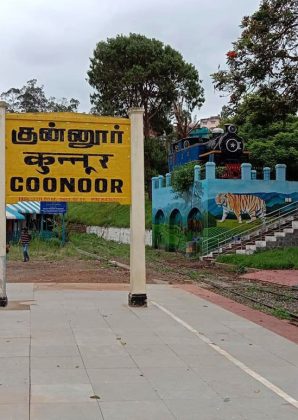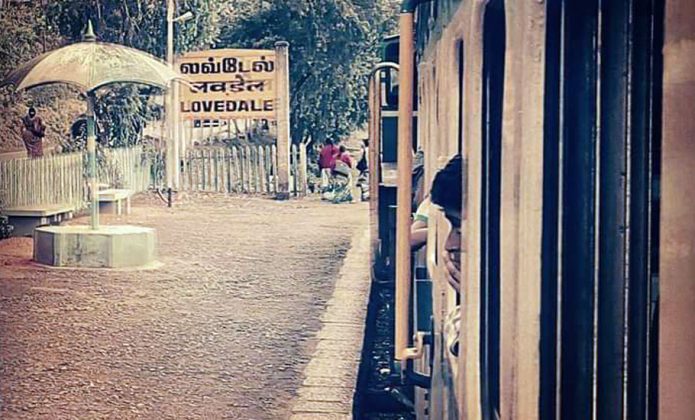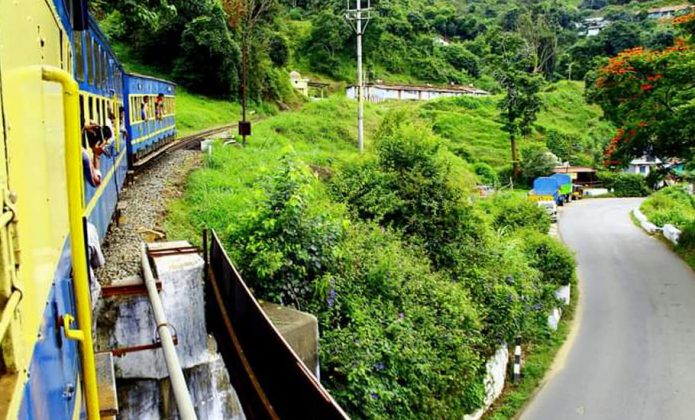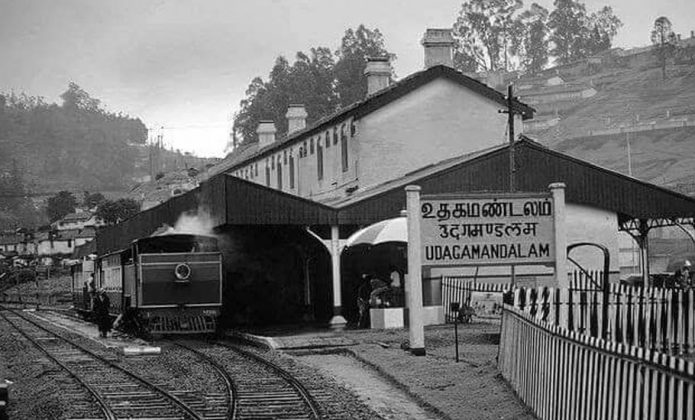
- Home
- India
- World
- Premium
- THE FEDERAL SPECIAL
- Analysis
- States
- Perspective
- Videos
- Sports
- Education
- Entertainment
- Elections
- Features
- Health
- Business
- Series
- Bishnoi's Men
- NEET TANGLE
- Economy Series
- Earth Day
- Kashmir’s Frozen Turbulence
- India@75
- The legend of Ramjanmabhoomi
- Liberalisation@30
- How to tame a dragon
- Celebrating biodiversity
- Farm Matters
- 50 days of solitude
- Bringing Migrants Home
- Budget 2020
- Jharkhand Votes
- The Federal Investigates
- The Federal Impact
- Vanishing Sand
- Gandhi @ 150
- Andhra Today
- Field report
- Operation Gulmarg
- Pandemic @1 Mn in India
- The Federal Year-End
- The Zero Year
- Science
- Brand studio
- Newsletter
- Elections 2024
- Events
- Home
- IndiaIndia
- World
- Analysis
- StatesStates
- PerspectivePerspective
- VideosVideos
- Sports
- Education
- Entertainment
- ElectionsElections
- Features
- Health
- BusinessBusiness
- Premium
- Loading...
Premium - Events
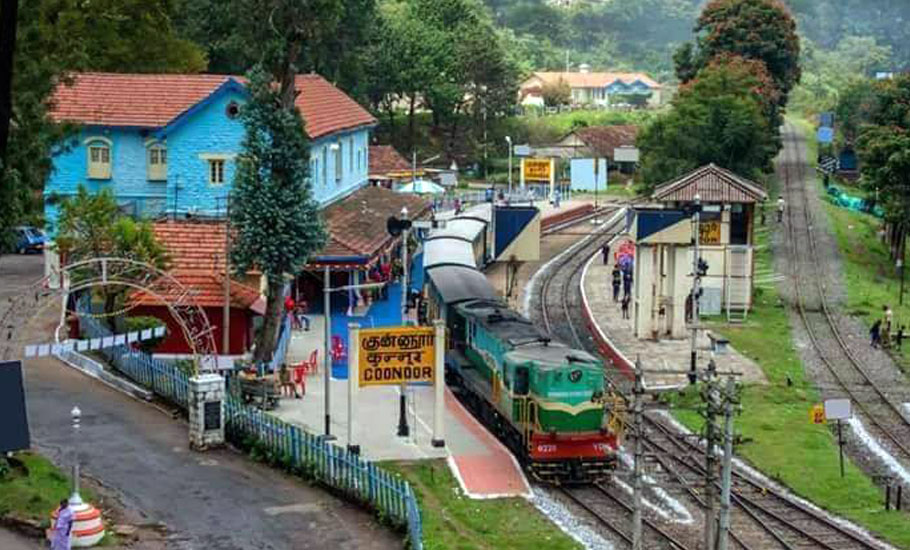
Remembering the Nilgiri Mountain Railway before the joy ride 'ends'

For decades, honeymooners and adventure-seekers have looked for romance and escapade travelling through the lush green mountains of Tamil Nadu in a five-hour train journey. Yet the 46-km journey on Nilgiri Mountain Railway (NMR) up and down the scenic route of Mettupalayam — at the foothills of Nilgiris — to Ooty continues to be relived and recounted in numerous train tales...
For decades, honeymooners and adventure-seekers have looked for romance and escapade travelling through the lush green mountains of Tamil Nadu in a five-hour train journey. Yet the 46-km journey on Nilgiri Mountain Railway (NMR) up and down the scenic route of Mettupalayam — at the foothills of Nilgiris — to Ooty continues to be relived and recounted in numerous train tales of nostalgia.
However, just like with everything else, the NMR services were stopped in March to avoid the spread of Covid-19. It has resumed services from December 31. But days before this, the NMR made headlines after a private company — Homemade Group TN 43 — paid nearly Rs 5 lakh to operate the train as a charter service earlier in December. It charged a whopping Rs 3,000 per seat, for a single journey even though the regular fare is Rs 600 for a first class ticket, and Rs 295 for second class.
This exorbitant fare, besides an outrage among railway enthusiasts and passengers, led to speculations that it could be a prelude to possible privatisation of the heritage route.
While the Southern Railways has denied any such move, the development dug up some nostalgia attached to NMR, which was accorded the World Heritage Site status by the UNESCO 15 years ago.
Beginning of a long journey
In its 167 years of history, the Indian Railways has made several memorable journeys. It was in 1853 when the first passenger train plied between Bori Bunder and Thane. However, a proposal for railways was made back in 1832 in Madras.
Even before passenger trains came into existence, there were trains that used to transport construction materials. The first such train ran in Madras in 1837. In 1845, a railway line was built for transporting stone and construction materials for a dam over the Godavari river. It was for the same reason, the NMR was built. But instead of constructing just buildings, the train helped build a modern city.
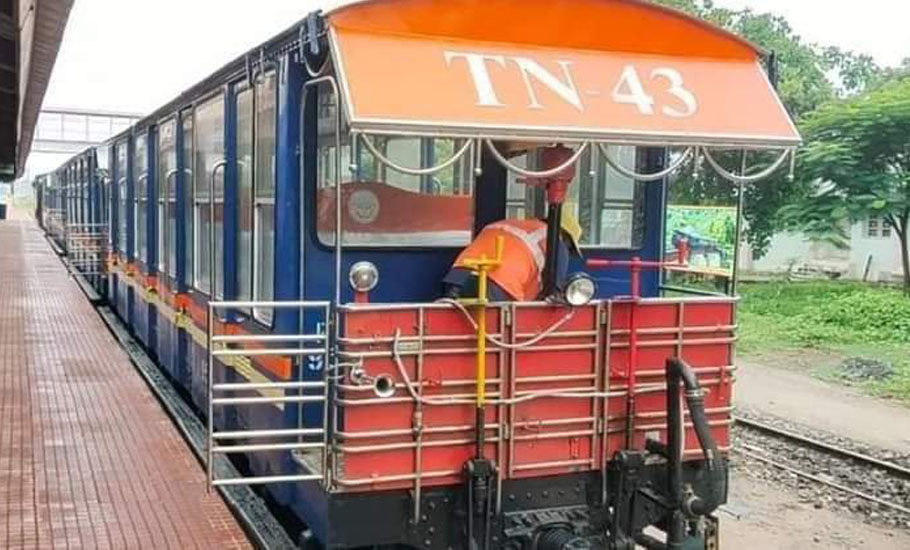
When British official John Sullivan hoisted the Union Jack in the blue mountains in 1819, it officially became the ‘discovery of Ootacamund’ (now Ooty), as if the imperialist ‘sun’ had shed light in the dark region. There were no roads then and he had climbed up the hill walking for six days.
It was for the very convenience of the British that the NMR came into existence. The laying of a railway line from Mettupalayam in the plains to Coonoor in the hills was first proposed in 1854, the year after the first passenger train ran in Bombay. But due to bureaucratic delays, the proposal was not put into action.
In 1876, Niklaus Riggenbach, the Swiss engineer who founded the Rigi rack system, a design used in the hilly terrain, proposed to build a railway track in the Nilgiris. In turn, he wanted land for free of cost and demanded a guarantee of four percent for 10 years on the estimated cost of 4,00,000 British pounds. He also sought tax exemption. But the government turned down the proposal.
In 1877, the then governor of Madras Presidency, the Duke of Buckingham got a proposal for the construction of a railway line from Mettupalayam to Kallar, the base of Nilgiri hills, and from there a ropeway for two miles till Lady Canning’s Seat, a picnic spot near Coonoor. From there to Coonoor, another railway line was marked in the proposal. Although the proposal seemed possible, the fear of transporting people in a cabin that is suspended and pulled by cables made the Duke drop the proposal.
In 1882, Riggenbach again approached the British with a new proposal. The budget required this time was 1,32,000 pounds, that was less than what he pitched earlier. This time the government accepted the proposal and gave some concessions in land acquisition. It also provided a limited guarantee for revenue share. The railway line between Mettupalayam and Coonoor was finally completed on June 15, 1899 and opened up for traffic.
An engineering marvel
The NMR is one of the seven mountain railways in the country and is the steepest of all. The length of the railway line is 46 km and the track is a meter gauge. It is the only rack-and-pinion line in the country. The same kind of rack can be found only in Switzerland.
The railway line can be divided into three sections — from Mettupalayam to Kallar — a plain track, from Kallar to Coonoor — rack and pinion track, and again from Coonoor to Ooty — plain track. There are 13 stations that the train earlier used to stop. But of late, five of them have been closed.
The second section of the railway line has 208 curves, 258 bridges and 16 tunnels. The maximum allowed speed in this section is 13 kmph.
While the rack bars were made in England, the steam engines or locomotives currently used were purchased in 1925 and 1952 from Switzerland’s Swiss Locomotive and Machine Works. There was a fleet of 14 Swiss built ‘X Class’ locomotives, of which 11 were replaced due to ageing, by Indian built locomotives. The replaced locomotives are being used as display materials in some of the railways across the country.
As of now only three Swiss locomotives are in service and two are in active use. Along with Swiss engines, four made-in-India locomotives are also in use. All the locomotives were earlier operated by coal but are now powered by furnace oil.
In 1993, diesel engines were introduced in this route. However, it was used only in the stretch between Coonoor and Ooty. Interestingly in 2006, two locomotives were run for the first time on biodiesel extracted from the seeds of Jatropha plants.
The Swiss locomotives are being maintained at a loco shed in Coonoor. A hand-operated crane, manufactured in England, is still in use to overhaul the locomotives. Similarly, during its inception, the railway had six carriages made of timber, of which some were imported from England and Germany.
To put things in perspective, for a proper train service, a train needs 28 coaches. In 2019, the NMR inducted 15 coaches made of steel and in future it hopes to purchase some more coaches. However, the maximum vehicle limit is six carriages.
Mishaps in the mountain
For 121 years, the NMR has ferried many dreams and people up and down the hills. However, not all those rides had a happy ending. Over the years, the train services had to be cancelled for various reasons such as low-quality coal, torrential rains and technical glitches.
In 1981, a rock rolled over the train injuring four members and killing a gangman (railway labourer). The following year, a goods train from Mettupalayam was derailed and all the eight members in the train were killed. That put an end to freight services. Before that explosives for Aravankadu Cordite Factory, coal and tea were also ferried up and down.
Journey into oblivion
“The best way to experience the fury of steam on the NMR is to take the train on the uphill run, and by being seated beside a window, but on the side opposite the platform at Mettupalayam, to obtain immense photographic opportunity as you go along, while listening to the music of the steam whistle, and the sound of the steam engine puffing along rhythmically with awesome determination, emitting dense plumes of smoke, at the rear end of the train. It is one of the greatest steam experiences still left in the world,” writes VM Govind Krishnan, a railway enthusiast and author of Nilgiri Mountain Railway: From Lifeline to Oblivion.
According to him, without taking any efforts to maintain and modernise the NMR, the Centre has had plans to dismantle the NMR since 1968, saying the it is “uneconomic”.
Citing the same reason, NMR trains were suspended for seven months from December 1973. The services were resumed following public protests, not only from within the country, but across the world.
In August 1974, the then DMK chief minister M Karunanidhi sent a proposal to the Centre saying that if it cannot be operated by the Centre, it can be given to the state or both the state and Centre can jointly run the operations. But that proposal was never considered.
Krishnan feels the NMR got a step-motherly treatment by the Ministry of Railways and the Government of India even when it came to releasing stamps.
“A request to the authorities in New Delhi to have a stamp issued was sent on October 31, 1996, well in advance of the event on June 15, 1999 — the centenary of NMR — mentioning that a stamp was issued to mark the 100 years of the Darjeeling Himalayan Railway. A reply dated December 12, 1996, was received from the assistant director general (Philately), PD Tshering, regretting to consider the proposal. He wrote: ‘A stamp has already been released for Nilgiri Mountain Railway on 16–4–93. As a matter of policy, this department does not issue more than one stamp on the same issue.’”
But the ‘criteria’ for others seemed different.
“Despite having a stamp for a steam engine of the Kalka-Shimla railway released on April 16, 1993, in the set of stamps on Mountain Locomotives, the Kalka-Shimla railway was again honoured with a stamp on completing 100 years on November 9, 2003,” Krishnan adds.
It was because of the efforts of rail enthusiasts like Krishnan and the now-defunct NMR Society that the railways got the UNESCO World Heritage status on July 15, 2005. It received the status along with the Darjeeling Himalayan Railway (DHR).
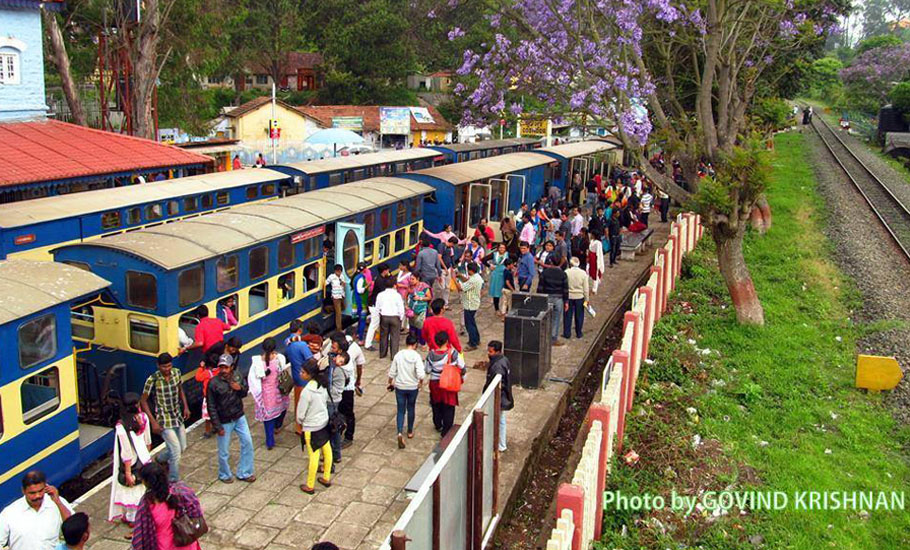
“The DHR was basically a roadside tramway with no notable structures and experimental in nature. The NMR was altogether a more substantial affair,” said the UNESCO committee. With the alternate biting teeth (ABT) technology rack system, the NMR makes the climb quickest on a steeper gradient.
The committee also observed that “there are a few other Abt rack railways in the world, and none so authentic. The NMR was the most original and one of the largest rack-and-pinion railways in the world”.
But even after the UNESCO status, the government’s apathy towards the NMR hasn’t changed, says Krishnan.
“Despite having seven working engines for the rack railway between Coonoor and Mettupalayam, the Salem Division is loathe to operate a daily additional passenger train and cite various reasons as to why more trains cannot be run. The ridiculously low rail fares must be hiked to reasonable limits for the hill railway, which should be run with a business sense, and offering more comfortable travel instead of the cramped seating without legroom, and no luggage racks too.”
Higher fare, he adds, with better facilities are available on the Kalka-Shimla narrow gauge line.
When The Federal contacted the officials of Salem Division of Southern Railways about modernising the NMR, they said as of now there are no plans to bring new additions to NMR.
“Once the pandemic gets over and the normal train services are resumed, we can think of next steps,” says an official who doesn’t wish to be named.
Commenting on the recent controversy surrounding NMR that it may have been handed over to private players (which the Southern Railways has refuted), Krishnan says: “Chartered trips were introduced in NMR in 2002. The recent incident, wherein a private agency operated the train, was also a chartered trip. Since it was allowed at a time when even the regular services haven’t commenced (because of Covid-19), the trips created a lot of fuss.”
But this is not the first time that there has been so much fuss over the NMR’s legacy. The heritage railways has always been in the news, mostly for happy reasons.
NMR in films
NMR has been a centre of attraction in many films. One of the earliest Tamil films that etched NMR in the hearts of moviegoers was Kamal Haasan-starrer Moondram Pirai (1982, Hindi remake Sadma). Who can forget the heartbreaking climax scene shot in Lovedale station!
David Lean’s 1984 film A Passage to India also has some scenes showing NMR. In 1998, Malayalam film, Summer in Bethlehem, starring Suresh Gopi, was shot here. The famous Chaiyya Chaiyya song from Mani Ratnam’s Dil Se, starring Shah Rukh Khan, released in the same year, was shot on top of the NMR train.
But despite all the glory, train enthusiasts feel if the Centre’s apathy continues, the NMR would soon become history and it can be seen running only in the films mentioned above.
In 1997, during the installation of the Centenary Arch at the entrance of Coonoor Railway Station, a Nilgiri based journalist PS Sundar, who has extensively covered the NMR for more than four decades was honoured by the senior officials of Southern Railway. In his speech, the journalist quipped: “The NMR actually ran mostly on newspaper columns than on the tracks.”

